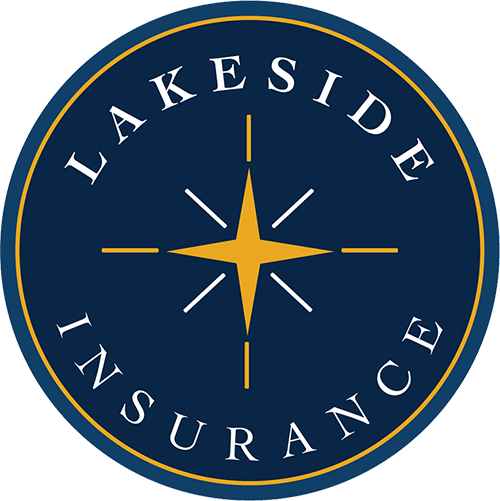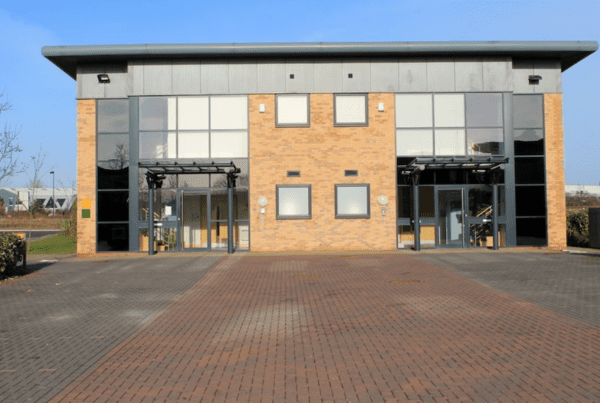
It’s hard to overstate the importance of liability insurance to your business. The right liability insurance protects against injury and property damage claims that can cost millions.
How liability insurance works
Liability insurance defends your company against lawsuits and third-party claims that you caused personal injury or property damage. General liability coverage helps cover the costs of medical care, repairing or replacing property, legal fees, defamation and advertising infringement claims, wrongful evictions, false arrests and wrongful detentions.
Regardless of the type of liability insurance you have, a claim must generally meet three conditions.
First, the injury or damage must be caused by an occurrence or accident that leads to unintentional injury or property damage. Liability insurance policies don’t cover intentional harm.
Second, the accident must happen inside the insurance coverage territory, which generally is the U.S. and its territories, and Canada. However, this can vary depending on the terms and conditions of the policy.For example, a product made and sold in the U.S. might still be covered no matter where the damage occurred. Or a liability policy might still respond to a lawsuit involving an employee’s conduct while working abroad.
Third, a claim must be filed while the policy is active or within the policy parameters. That depends on the type of policy. There are two types of policies with respect to this condition:
- Claims-made policies: The incident and the claim must have happened within the policy period, unless you have an extended reporting period (ERP). This is also known as “tail coverage.” An ERP uses a retroactive date that you and the insurance company agree on. Incidents that happen within the retroactive period are covered. ERPs are common among businesses where there might be long gaps between the occurrence of a negligent act and its discovery. Health care, legal services, finance, construction and environmental services are just a few industries that use it.
- Occurrence-based policies: The incident must have occurred when the policy was active to make a claim. A claim can be made years after the fact, as long as the incident occurred while the policy was in force. These policies usually cost more than claims-made policies.
Remember, all insurance policies vary with each insurance company.
Understanding the risks
Because there are different types and combinations of liability insurance, you need to understand your business’s risks before deciding on coverage. Here are some risks you should consider:
- Natural disasters such as hurricanes, tornadoes, wildfires and floods
- Property damage or theft
- Intellectual property theft
- Bodily injury involving customers, clients or employees
- Product defects, recalls and liability claims
- Legal disputes and lawsuits
- Mechanical breakdowns and failures
- Cyberattacks and data breaches
Your insurance agent can help you identify your risk areas and liability exposures.
Types of business liability insurance
Whether you have a small business, startup or corporation, you must understand the complexities of the various forms of liability insurance.
Commercial general liability insurance
Commercial general liability insurance (CGL) protects your business against most liability claims. CGL is essential if you regularly interact with customers. It covers incidents occurring on your premises or resulting from your business activities.
CGL policies cover accidental injuries and property damage to others, medical expenses and funds foryour legal defense.
CGL also provides advertising injury coverage for unintentional copyright infringement, libel, slander and general liability claims. And it includes product liability insurance to safeguard you against claims that your product harmed someone or their property.
You aren’t legally required to obtain CGL. However, you may need liability insurance as a condition of doing business. This often applies to clients, stakeholders, board members, suppliers and contractors.
Your premium for general liability insurance will depend on various factors, like your:
- Claims history
- Business industry risk rating
- Company operations and size
Your premium will largely depend on two numbers. The higher your per-occurrence and aggregate limits, the higher your premium.
The per-occurrence limit is the maximum payout for a single claim. The typical CGL policy has a limit of around $1 million, including settlements and legal fees.
The aggregate limit is the amount the insurance company will pay out for all claims during the policy period. The typical CGL policy has an average aggregate limit of $2 million.
With an occurrence-based policy, the aggregate limit resets every year. However, claims-made policies don’t automatically reset every year. It depends on the terms of the policy. You can choose a new aggregate limit at renewal time.
Commercial property insurance
Commercial property insurance safeguards physical assets like buildings and structures, machinery, signs, furniture, equipment and inventory against risks like fires, theft, storms and vandalism. It will pay to repair or replace damaged property.
However, it does come with exclusions. The following are not covered:
- Damage due to earthquakes (requires a separate policy)
- Damage due to flooding and mudflow (requires a separate policy)
- Wear and tear, mold and infestations
- Intentional damage
- Nuclear reactions, wars and terrorism
You can add coverage for most of the exclusions listed above. You might also want to consider upgrading your policy to include:
- Ordinance or law coverage: After a covered loss, you may need to rebuild your property to meet new building codes, even the undamaged parts.
- Betterments and improvements coverage: If you rent a space, this coverage will pay to repair or replace any improvements you’ve made to the building.
- Machinery and equipment breakdown: This coverage protects you against sudden, accidental and physical damage to installed machinery and equipment.
- Sewer backup: If a sewer drain overflows and backs up into your building, this coverage will pay to repair the damage. Sewer backups are not included under flood or commercial property insurance.
Remember to keep your property valuations current. This will ensure you have enough coverage and help you avoid penalties for being underinsured. You might face a penalty if you violate your policy’s coinsurance clause. A coinsurance clause means you must insure your property to a percentage of its value, usually 80%-100%.
When you make a claim, the insurance company will assess the replacement value of your building incurrent dollars. Replacement value is how much you would pay in materials and labor to rebuild your property, not the market value. If your coverage amount is less than the required percentage of your property’s value, you are considered underinsured.
For example, say your property is valued at $50,000 and your coinsurance is 80%. You get $40,000 in coverage and forget about it, renewing each year without adjusting your limits. Years later, a fire causes$30,000 in damage.
The insurance company values your property at $100,000. But your property limit is still $40,000. You’re underinsured. You only have 50% instead of the agreed-upon of 80% coinsurance. Your insurance company reduces your payout to match the percentage of coverage you carried. You only get 50% of the damages ($15,000) instead of 100%.
It’s easy to become unintentionally underinsured, especially if it’s been a while since you adjusted your limits. That’s why getting a periodic property valuation is essential.
Professional liability insurance
Professional liability, or errors and omissions (E&O), insurance protects professionals against mistakes and negligence claims. Professionals such as lawyers, doctors and architects get this type of liability insurance to protect themselves against lawsuits due to errors or omissions in their professional work.
Professional liability insurance safeguards your organization and your staff from claims of inaccurate advice, misrepresentations, negligence, breaches of contract, and libel and slander.
Certain professions, including accountants, architects, lawyers, real estate agents, health care workers and law enforcement officers, are required to have professional liability insurance by law or as part of their industry standards. Here are a few examples:
- Accountants must obtain professional liability insurance to protect against claims of book keeping or tax return errors, failures to submit tax returns, and professional mistakes.
- Engineers and architects must get professional liability insurance for advice and design mistakes, breaches of contract, and negligence.
- The health care industry requires medical malpractice insurance to cover patient injuries and wrongful death claims.
Professional liability insurance does not include medical or legal expenses, so you would need a general liability insurance policy as well. It doesn’t cover wrongful terminations or workplace harassment, either.You’d need employment practices liability for that.
The price of your policy will depend on your industry, location, limits, deductibles, years of operation, number of employees and past claims.
Professional liability insurance is a worthwhile investment. You must mount a legal defense if a client sues you, even if you’re innocent.
Product liability insurance
Companies that manufacture or design products need product liability insurance to protect against claims of product defects or failures and personal injuries. A product liability insurance policy will pay third-party settlements and legal fees if you are found at fault for a defect.
Product liability insurance protects retailers, suppliers, distributors and other distribution chain members,but it is not legally required.
The price of your policy will depend on the type of product you make, your company’s revenue and thelocation of your business.
The industry standard for product liability coverage is around $1 million, but you can get more using an umbrella or excess insurance markets. Ask your insurance agent for help with this.
Product recall insurance
Product recall insurance is different from product liability. It helps cover your losses if you are forced to remove a product from your supply chain.
It costs money to hire extra workers to pull product from the shelves, ship and store it, and retool or destroy it. Not all products are recalled due to injuries. Sometimes, recalls are issued proactively. You can use product recall insurance to help with the indirect costs of pulling back products, with or without injury or property damages.
Directors and officers insurance
You can get directors and officers (D&O) insurance to protect your directors and officers from actual and alleged wrongdoing while managing the company. D&O insurance pays their legal fees and damages in the case of a lawsuit.
A D&O insurance policy covers your executives and board members against claims of mismanagement, misrepresentation, breaches of duty or regulations, and vicarious liability. It covers monetary damages, settlements and lawyer fees.
Vendors, contractors, customers and competitors can sue your corporate officers and directors for breaches of fiduciary duties and negligence. Board members are often named in lawsuits after catastrophic events like groundwater contamination from manufacturing plant pollutants, sexual abuse and cyberattacks exposing sensitive data. A D&O insurance policy will protect the personal assets of your directors and officers, and their spouses.
D&O insurance typically doesn’t cover other employees, employees of the same position and status, or criminal or illegal acts committed by your director or officers. But your directors and officers can be named in a lawsuit even if they had no knowledge of another board member’s wrongdoing. So until innocence is established, every board member will have to spend money on a defense.
The cost of D&O insurance depends on the number of directors on your board and the perceived risk of your industry. For example, if you have a nonprofit with youth programs, your risk might be higher than that of a historical art society.
D&O insurance policies come in three types: side A, side B and side C.
- Side A covers your directors and officers against nonindemnifiable losses. They’re protected even when your company cannot indemnify them for reasons like insolvency or legal restrictions. Ask your agent to clarify if it’s first-dollar coverage. This is important because it means your side A coverage will kick in immediately, paying for legal fees and settlements without any money from you.
- Side B, often called “corporate reimbursement coverage,” is the most common type of D&O coverage. If your company pays to defend or settle a claim on behalf of your directors or officers, you can get this money back from the insurer.
- Side C, or “entity coverage,” protects your company, senior management, and directors and officers if they’re named in a lawsuit. If someone brings a claim against your company directly, the insurance company will pay your defense costs and any judgments or settlements.
D&O coverage has extensive protections and customizations. For example, you could get extended coverage using a “difference in conditions” to supplement side A coverage. This can be a useful risk management strategy, especially if your company engages in a lot of risk.
It’s also a good idea to advise your board members about your D&O coverage. Give them the opportunity to secure a secondary D&O policy on their own. An individual D&O policy can supplement your overall coverage and give board members peace of mind.
Commercial auto insurance
Commercial auto insurance is for company-owned cars driven for business purposes. It works like privatecar insurance and covers car accidents, from fender benders to fatalities.
Most commercial auto insurance policies protect against liability damages, vehicle collisions and physical damage, medical expenses and legal costs.
Cyber liability insurance
In 2023, the average cost of a company data breach was around 4.45 million, according to IBM’s Cost of aData Breach report. That represents a 15% increase over three years.
Cyber liability insurance is a type of third-party policy that protects you against lawsuits filed by clients,vendors or employees for damages caused by a cyberattack. Cyber liability insurance covers the costs ofbusiness interruptions, ransomware, data breaches, imposed fines and defending yourself against privacylawsuits.
First-party cyber liability protects you against your own losses, including costs related to data breach notifications, credit monitoring services for affected customers, public relations and brand management, lost income due to business interruptions, and repairing and restoring computer systems and data. Some cyber liability insurance policies can help cover intellectual property infringement and errors and omissions.
Cyber liability policies are highly customizable and differ widely between insurance companies. Review your policy thoroughly, preferably with an independent agent and a lawyer.
The price of your cyber liability insurance will depend on your risk of a breach, cybersecurity protocols and preparedness, industry and location, and other risk factors.
Commercial umbrella liability insurance
Commercial umbrella insurance covers losses that exceed your underlying policy limits.
A commercial umbrella policy can cover legal and medical expenses, damage to someone else’s property, court judgments and settlements, libel and reputational damage, auto accidents, product liability, and client or customer injuries.
But remember, it doesn’t add coverage that wasn’t there in the first place. For example, if you had CGL andcommercial umbrella but not commercial auto and one of your workers got in an accident, your umbrellapolicy wouldn’t create auto coverage.
The aggregate limits of commercial umbrella liability insurance are between $1 million and $15 million. For example, if you were involved in a lawsuit that cost $1.5 million and your CGL policy had a limit of $1million, your CGL would stop paying for your legal fees at the $1 million mark.
It wouldn’t matter where you were in your case. You’d need to come up with the remaining$500,000 to continue your defense. And that doesn’t include potential settlements if you lose. A commercial umbrella would ensure you aren’t left paying out of pocket to make up the difference.
An umbrella liability insurance policy will likely require you to have a base general liability insurance policy of at least $1 million.
Commercial umbrella liability insurance isn’t as pricey as most people think, but the cost depends on various risk factors.
Excess liability insurance
While an umbrella expands and sometimes broadens coverage across multiple underlying policies, excess insurance amps up the protection limits on one policy.
For example, say you do a lot of deliveries from your warehouse. Your warehouse is mainly automated and isn’t open to the public. Since you don’t have as much liability exposure with your warehouse as you do with your vehicles and delivery operations, you decide to get $6 million in excess coverage on your commercial auto insurance.
BOPs and endorsements to liability coverage
A business owners policy (BOP) bundles general liability, property and sometimes business interruption insurance. A BOP is cheaper than buying these policies separately. BOPs are available for organizations with less than 100 employees and revenue under $5 million.
Some BOPs allow for many endorsements, while others don’t. Sometimes, customizing a BOP can become price-prohibitive if you have a lot of liability. At that point, it might be better to purchase the policies separately. Sometimes the separate policies offer broader coverage than a BOP. And if you supplement them with a commercial umbrella, you can significantly expand your coverage.
Certain industries don’t qualify for BOPs because of their risk. If you’re in one of these industries, you can get a commercial package policy (CPP) to underwrite your unique liabilities. Industries like health care, restaurants, hotels, construction, lawyers, tech and financial institutions often obtain CPPs tailored to their requirements.
If you do qualify for a BOP, one way to expand your coverage is an endorsement. A BOP endorsement allows you to customize a liability insurance policy to your unique risks. Here are a few examples:
- Employment practices liability endorsement: Regardless of how many employees you have, an employee can sue you for discrimination based on sex, race, age or another characteristic. An employment practices liability endorsement will pay to defend your company against discrimination claims and pay any settlements or damages.
- Liquor liability endorsement: If you serve or sell alcohol, you might need a liquor license and server training. A liquor liability endorsement will protect you against claims of bodily injury or property damage due to selling, making or serving alcohol. Some states have laws that regulate licensing and server training, so it’s important to remain in compliance.
- Employee benefits liability endorsement: If you offer benefits, you can get peace of mind with an employee benefits liability (EBL) endorsement. An EBL covers you if you make a mistake or omission in administering your employee benefits.
- ERISA bonds and commercial crime insurance: Standard liability policies do not cover insider threats. A fidelity bond, or commercial crime insurance, is integral to risk management. This is especially important if you administer retirement plans or handle sensitive information. AnEmployee Retirement Income Security Act (ERISA) bond will help if an employee steals retirement funds. Commercial crime is broader coverage that will help if an employee participates in intellectual property theft or launches a cyberattack against your company.
Safeguard your business
As a business owner, you face liability risks from every angle. Getting the right liability insurance can safeguard you from those risks and make your business more resilient.
To find the right liability insurance for your business, contact your insurance agent. They can provide you with a no-obligation quote and walk you through the nuances of the policy. They can also help you with risk management strategies to reduce your liability and potentially lower your premiums.




